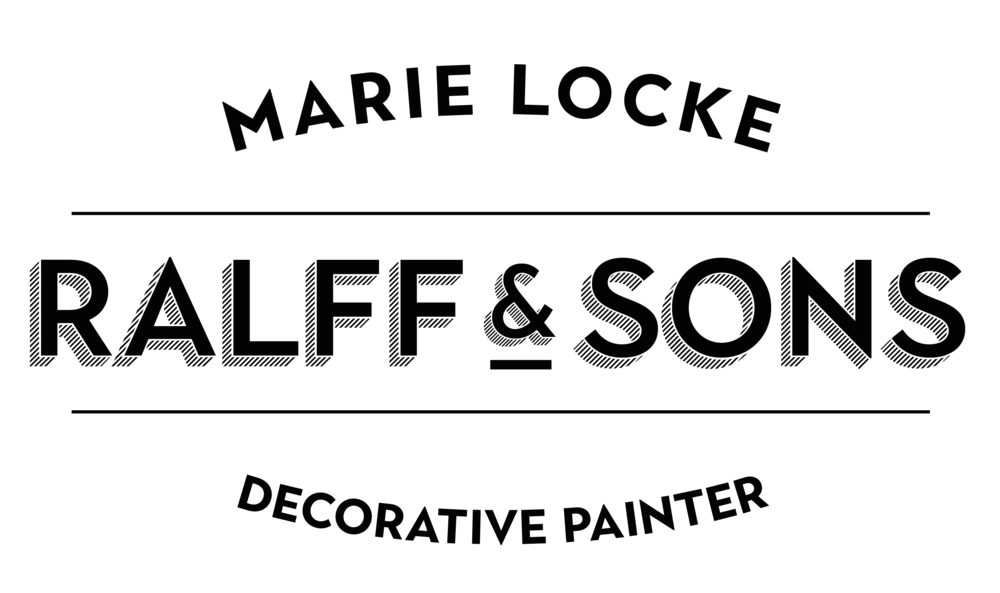OUR SERVICES
We look forward to creating custom colors, patterns, motifs and techniques for projects small and large. Our services include:
Color Consultations: Help determining colors, finishes and paint types that would be best for your project.
Hand Painted Patterning: Freehand painted image or repeat pattern.
Stenciling: A repeated image or pattern done by dabbing paint on sponge or stippling brush over the negative space cut out of a sheet of mylar.
Strié: A technique used for achieving a subtle mix of fine stripes (or brush strokes) by pulling a dry, stiff bristled brush through wet paint.
Stipple: A decorative treatment also known as “Pouncing.” A glaze or paint is applied to the surface and while it is wet, a stippler is pounced onto the surface causing the glaze to disperse into tiny dots.
Combing: Pulling a toothed “comb” through a wet glaze revealing the base color. This technique can be used to create checkerboard, plaid, wavy or other patterns. Endless design possibilities depending on the tools used.
Crosshatch or Basket Weave (Linen): Dragging a stiff brush through wet paint in both vertical and horizontal directions to achieve a “basket weave” appearance. When done subtly gives the appearance of linen fabric.
Parchment: Two or more complimentary colored glazes blended to simulate parchment paper.
Colorwash*: Thin layers of Glaze applied with a brush in wide sweeping strokes. Applying multiple layers creates depth.
Smooshing*: Glaze is applied with a brush and then softened with crumpled cheesecloth, paper or plastic.
Ragging*: A decorative paint finish that is either applied or subtracted with a crumpled damp rag.
Sponging*: A broken color effect produced by either applying color or removing color by pouncing with a natural sponge while paint is still wet.
*Whether applied over a smooth or textured surface, colorwash, smooshing, ragging and sponging simulate 2-dimensional texture that adds warmth, character and depth to an interior.
Distressing (Aging, Antiquing): Decorative paint finishes that give the appearance of age and wear.
Stripes: Stripes are applied over a solid basecoat or faux finished surface in a width suited to the scale of the room. Done in a subtly contrasting sheen results in a soft and rich effect.
Wood Grain: Also called “Faux Bois”, faux wood grain is a paint technique that replicates various wood grains, such as oak, walnut, birds eye maple, mahogany or even weathered barn board.
Faux Marquetry: Patterns painted on a floor (or piece of furniture) that simulates inlaid wood.
Faux Tile: Painted tile and grout lines. Endless possibilities to mimic any tile design.
Metallic finishes: Decorative finishes that use metallic paint in various techniques under or over other painted finishes. Golds, silvers and bronzes are used to achieve the appearance of antique gold, burnished bronze or shimmering silver.
Damask: A stencil is repeated over a broken finish background. Damask also has contrasting sheens. Usually the background is applied with a metallic paint and the stencil pattern is applied in a flat sheen paint, or vice-versa.
Stone Finishes: Multilayer faux finishes that create the illusion of limestone, malachite and marble of all kinds.
Trompe l’oeil Panels and Moldings: Painting technique that creates the illusion of dimension and depth (such as a raised panel door).
Stone block: This is a trompe l’oeil technique giving the painted surface the appearance of a stone block wall.
Leather: Pigment glazes applied over a smooth or textured surface to simulate leather.
Tortoiseshell: Technique of painting woodwork or even walls to look like tortoiseshell.
Crackle: A finish in which cracking is intentionally produced, allowing the undercoat to show through the cracks.
Spattering: showering a surface with flecks of colored paint. A fine spattering on furniture adds the merest suggestion of texture. Bolder spatters of several colors on a floor are an old New England tradition. I remember my grandfather spattering the floors of summer houses on Little Cranberry Island.
